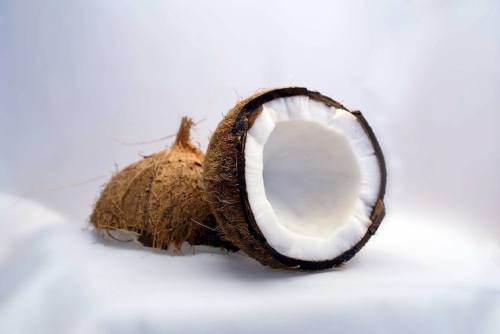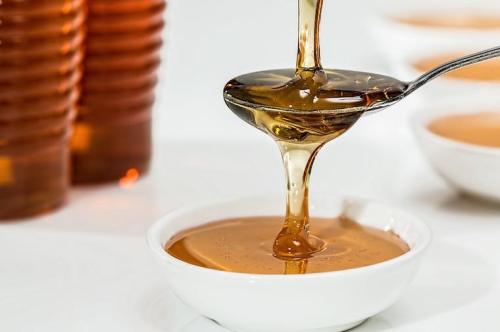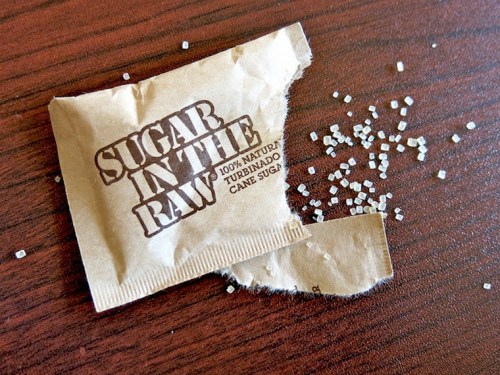Sugar, especially the white, refined kind we all grew up with, has never exactly been considered a health food. It spikes your blood sugar, increases inflammation, and can spur further cravings that can impact a person’s healthy eating goals. And artificial substitutes like Splenda and Sweet ‘N Low come with chemical baggage we’d rather avoid.
But life without something sweet every now and then doesn’t seem worth it, IMO. So we asked Erica Giovinazzo, RD, Clay Health Club’s resident nutritionist, and Tracy Lockwood Beckerman, RD, host of Well+Good’s YouTube series You Versus Food, if there are any benefits to the natural white sugar alternatives flooding the market. They helped us sort through the options and the marketing—from agave to stevia and even Sugar in the Raw.
Here’s the 411 on sugar and all its aliases, straight from a registered dietitian:
Just remember, Giovinazzo says, “naturally derived sugars are still sugars. They’re not a health food. But if you’re going to have sugar, there are more nutritious ways to get it.”
Here’s your guide to the most common natural white sugar substitutes…

Agave
Pro: Agave has a lower glycemic index, meaning your body absorbs it more slowly than refined sugar, so you avoid the typical blood-sugar spikes (and crazed rush). And it’s vegan. It also has some anti-inflammatory properties, Beckerman says.
Con: Agave, which comes from the same cactus as tequila, is primarily fructose (90 percent). While fructose breaks down more rapidly than glucose in the liver (that’s good for blood sugar), an excess can lead to a greater production of fat and “bad cholesterol,” says Giovinazzo. Oddly, it’s 10 calories more per tablespoon than sugar. Plus, “commercial agave is oftentimes refined and processed, which destroys some or all of the beneficial health properties,” says Beckerman.
Flavor and Uses: Its liquid, melt-y quality is ideal for stirring into cold liquids (lemonade!) without the sometimes cloying taste of honey. It’s not as ideal for baking, although it can be used with some adjustments (either less additional liquid or more starch).

Coconut Sugar
Pro: Made from the sap of the coconut palm tree buds, it’s not as chemically processed as other sugars, according to Giovinazzo. It comes with lots of additional health benefits, too. “Coconut sugar has a high content of micronutrients like iron, zinc, calcium, and potassium,” says Beckerman, along with polyphenols and antioxidants. It also has a low glycemic index, likely due to its higher fiber content.
Con: It’s expensive. Depending on the store, it tends to be about four times more expensive than Domino. Plus, it still contains the same amount of calories as regular sugar, and still has a high amount of fructose in it, “so be sure to use in moderation,” says Beckerman.
Flavor and Uses: Of the natural options, it tastes the most like regular sugar, although perhaps with a slight caramel taste (but what’s wrong with that?). It’s great in baking and can be substituted 1:1 for regular processed sugar.

Honey
Pro: It’s loaded with an array of vitamins and minerals, including B2, B6, iron, and manganese. Its anti-fungal and antibacterial properties ward off colds, explains Giovinazzo, and there’s a possible probiotic effect (the good bacteria similar to that found in yogurt). Raw honey has a high level of antioxidants, and the darker honeys have even more.
Con: “Honey has more calories than sugar, is technically sweeter, and has more fructose,” says Beckerman. Its glycemic index is higher than agave’s (though it’s still lower than refined sugar). So again, use in moderation.
Flavor and Uses: Honey’s soft sweetness is genius in tea. It holds up fine in baking as a replacement for white sugar, though it retains its distinct honey taste and, like agave, needs some adjustments (reduced liquid and added baking soda) to make up for its liquidity. Look for raw honey, which is less processed and thus retains more nutrients.

Maple Syrup
Pro: Piped straight from the tree, this sweetener couldn’t be any more natural. (We’re not talking Mrs. Butterworth here.) Pure maple syrup is high in antioxidants, zinc which boosts the immune system, and manganese necessary for the body’s enzyme reactions, says Giovinazzo. Plus, maple syrup has been linked to improved brain health.
Cons: “Maple syrup is two-thirds sucrose, or table sugar, in [its] makeup,” says Beckerman. It thus has a high glycemic index—just not as high as regular sugar. Unless you really love the taste, it probably wouldn’t work in tea, coffee, or other beverages. At 51 calories per tablespoon, it’s about the same as table sugar.
Flavor and Uses: Tastes like Vermont. It’s great as a topping for pancakes, yogurt, or oatmeal, but maple syrup also works fine in baking, with reactions similar to that of honey.
Molasses
Pro: It has a high nutritional value, especially the blackstrap variety, which has 70 percent more potassium than a banana, 20 percent of a woman’s daily requirement of iron, and as much calcium as half a glass of milk, according to Giovinazzo. It’s made during the processing of plain sugar, so it holds onto the sugar cane’s original nutrients before the refined sugar is stripped out. “Everything that’s good about sugar is in molasses, and everything bad about it, is in the refined version,” she says.
Con: It’s not a health food, even with its nutritional profile. And its strong taste isn’t great for beverages or for baking, unless we’re talking dense flavorful baked items like gingerbread.
Flavor and Uses: It hints of smokiness and is best drizzled into smoothies or yogurts, and even chiles. Calories are the same as sugar for blackstrap molasses; regular molasses weighs in the same as agave and honey, 60 calories per tablespoon.

Stevia
Pro: It comes from the stevia plant. “It has fewer calories than sugar, and may be a great alternative for people on low calorie or low carb diets,” Beckerman said. It may also have less of an impact on your blood sugar than regular sugar, she said. Plus, it’s sweeter than sugar, so you don’t need to use much. “It seems to have no side effects, and is a better choice than Splenda and friends,” says Giovinazzo. Con: Sometimes it’s chemically processed and mixed with sugar alcohol, which can cause diarrhea and indigestion, and may account for an unpleasant after-taste that some notice. Check the labels. Truvia is both erythritol (a sugar alcohol) and stevia. SweetLeaf is a better choice, she says. “It contains stevia and inulin (a prebiotic fiber). I’m not opposed to the inulin being in there!”
Plus, Beckerman said that some (small, in vitro) studies have found that stevia could act as an endocrine disruptor, meaning it has the potential to mess with certain hormones like progesterone. It may also cause an increase in sugar cravings because of its sweet taste.
Flavor and Uses: Stevia’s an intense sweet hit. It mixes into beverages and sweet cocktails nicely, but it’s not great in baking, and needs to be majorly reduced: plan for a 1:8 stevia/sugar ratio.

Sugar Alcohols (Erythritol, Malitol, Xylitol)
Pro: These sugar subs ending in “ol” are extracted from plants or manufactured from starches. They’re much lower in calories than sugar (and most of its stand-ins) and have less of an impact on blood sugar.
Con: They can be stressful on the GI tract, causing unpleasant digestive symptoms. Like all sweeteners, they may perpetuate sugar cravings because your body expects calories when sweetness is on your tongue. When the calories don’t come, says some nutrition research, the body will be left wanting it.
Flavor and Uses: You’ll find these sweeteners in lots of packaged products like flavored waters, sugar-free gum, and nutrition bars (erythritol is often paired with stevia on ingredient lists), and they’re often used in products for diabetics because of the low blood sugar impact.

Sugar in the Raw
Pro: This brown, crunchy sugar, which is also called “turbinado” is essentially the same as white cane sugar but is slightly less refined, so it’s retained some of the molasses. Some say white sugar is “bleached” with sulfur dioxide, while sugar in the raw is not, says Giovinazzo.
Con: When it comes to your health, it’s still basically the same as regular refined table sugar—lots of calories, a blood sugar spike, and so on and so forth. Again, it’s not a health food.
Flavor and Uses: This is the go-to coffee sweetener for cleaner-living types who still frequent Starbucks. It’s great in coffee and tea and is also great for baking. But it’s not a straight swap for refined sugar. It’s just as sweet, but much more coarse.
Originally posted March 28, 2013, updated January 31, 2020.
Think you’re pretty good about your sugar intake? You may not realize how much you’re getting in these 5 unexpected foods. And here’s how to cut it out entirely.
Sign Up for Our Daily Newsletter
Get all the latest in wellness, trends, food, fitness, beauty, and more delivered right to your inbox.
Got it, you've been added to our email list.










